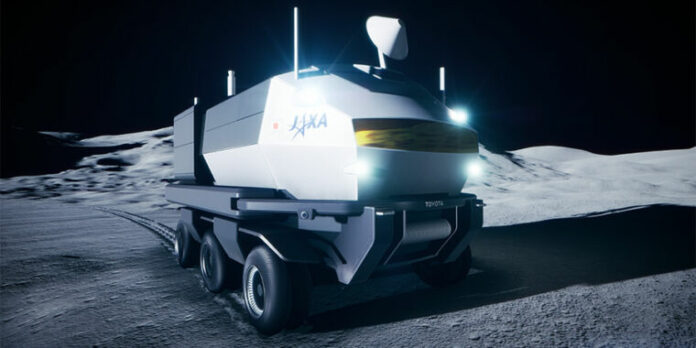On the sidelines of the state visit by the Japanese prime minister to Washington this week, US and Japanese officials have signed an agreement to cement a partnership that will pave the way for a Japanese astronaut to walk on the Moon.
The Japanese astronaut, still unnamed, will become the first international astronaut to walk on the Moon under the auspices of the NASA-led Artemis program. Astronauts from NASA’s other major partners on Artemis—the European Space Agency (ESA), Canada, and the United Arab Emirates—will also get a chance to fly to the Moon, either to the planned Gateway space station in lunar orbit or on trips to the surface.
But Japan will get the first international seat on a lunar landing mission, President Biden announced Wednesday during a joint press conference with Japanese Prime Minister Fumio Kishida. Other topics on the agenda for the official visit included deepening economic, military, scientific, and educational ties between the two nations.
“Those ties stretch up to the Moon, where two Japanese astronauts will join future American missions, and one will become the first non-American ever to land on the Moon,” Biden said.
An RV for the Moon
With international partnerships, NASA’s preference is to operate through barter arrangements with other space agencies.
On the International Space Station program, NASA and Russia’s space agency have a no-funds-exchanged agreement to provide seats for US astronauts on Russian Soyuz spacecraft and seats for Russian cosmonauts on US spaceships flying to and from orbit. NASA doles out seats for space station missions to ESA, Japan, and Canada based on each partner’s share of the lab’s operating costs.
This new agreement between the US and Japan is similarly transactional. Japan will oversee development of a pressurized lunar rover to ferry astronauts across the lunar surface. This is a significant commitment. It will take the better part of a decade to deliver the pressurized rover to the Moon. Japanese officials have not yet disclosed how much it will cost.
The Japan Aerospace Exploration Agency (JAXA) has been working with Toyota and Mitsubishi Heavy Industries for several years on the design of a pressurized rover. The vehicle would be roughly the size of two minibuses parked side by side, measuring nearly 20 feet (6 meters) long, 17 feet (5.2 meters) wide, and 12.5 feet (3.8 meters) tall. Its interior cabin could offer “comfortable accommodation” for two people, or four in an emergency, according to Toyota.
Mobility is important for NASA’s long-term goals at the Moon, which include surveying and harvesting resources like water ice and eventually building a lunar base on the surface.
The pressurized rover concept, which Toyota calls the “Lunar Cruiser,” could explore the moon with astronauts inside for up to 30 days at a time. Crew members will be able to take off their spacesuits and work inside the vehicle in regular clothing. When astronauts aren’t onboard, operators could remotely control the rover from a separate spacecraft or from Earth. Japanese officials aim to deliver it to the Moon in 2031, where it will operate for 10 years.
“It’s a mobile habitat,” said Bill Nelson, NASA’s administrator. “It’s a lunar lab, a lunar home, and a lunar explorer. It’s a place where astronauts can live, work, and navigate the lunar surface, leading to magnificent discoveries for all of us. What better representation of the power of partnership than this vehicle? It’s going to lead us to cover ground we’ve never covered before, because they’ll be out and can stay for several days on the surface.”

In exchange for Japan providing the pressurized rover for NASA’s use, NASA will assign two seats for Japanese astronauts on future Artemis landing missions.
“An implementing arrangement has been signed on this occasion, and the provision of the lunar rover by Japan and the allocation of two astronaut flight opportunities to the lunar surface to Japan were confirmed,” Kishida said through a translator. “Under the Artemis program, I welcome the lunar landing by a Japanese astronaut as the first non-US astronaut (on the Moon).”
The pressurized rover is separate from NASA’s unpressurized Lunar Terrain Vehicle, which will be more akin to the rovers Apollo astronauts drove around the Moon more than 50 years ago. Last week, NASA announced three industrial teams to refine their concepts for these smaller commercially developed unpressurized rovers.


